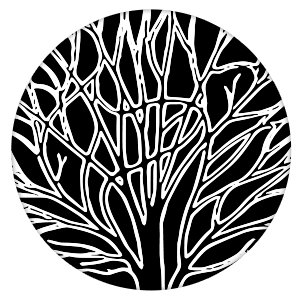The Neverending Story: Cultural Evolution and Narratives
Module Lectures
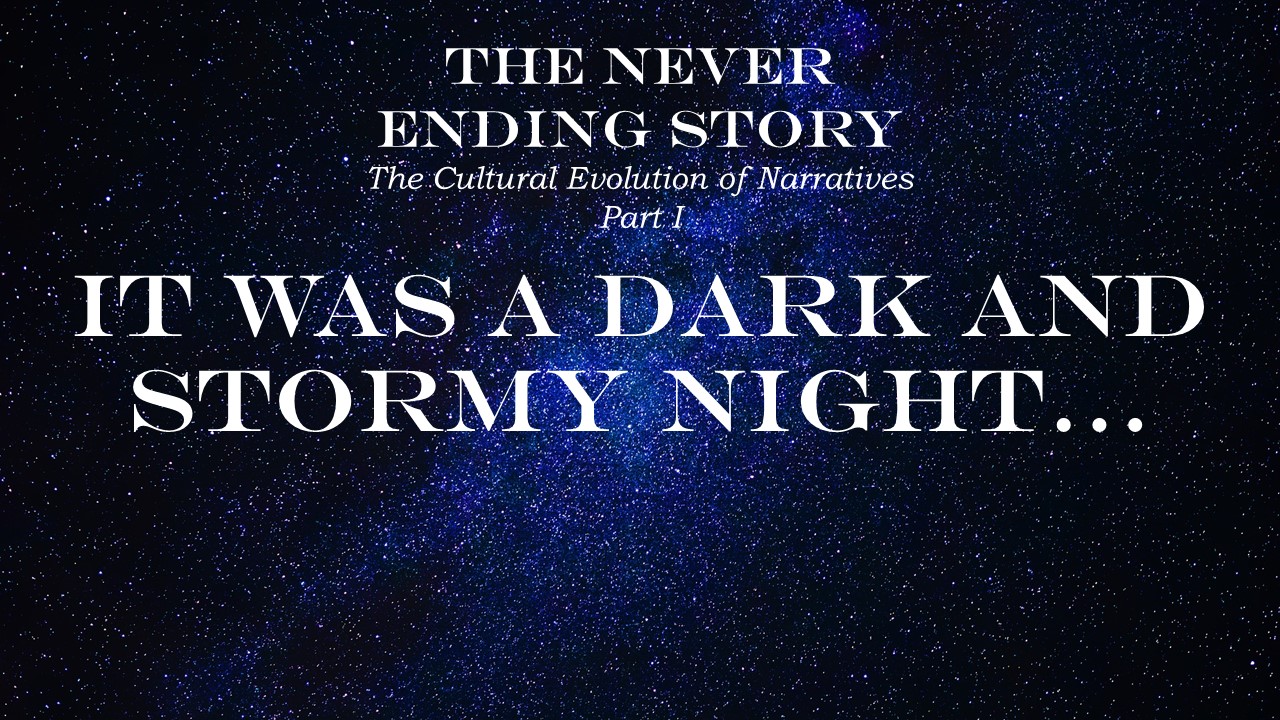 Lecture 1: Introduction I.
This lecture sets the scene for the course. It explores the important role of narratives in human culture and the psychology of 'narrativity'. It provides a brief introduction to how cultural evolution can approach these stories. The exercise involves reading a paper a crucial paper for understanding the cultural evolution approach.
Lecture 1: Introduction I.
This lecture sets the scene for the course. It explores the important role of narratives in human culture and the psychology of 'narrativity'. It provides a brief introduction to how cultural evolution can approach these stories. The exercise involves reading a paper a crucial paper for understanding the cultural evolution approach.
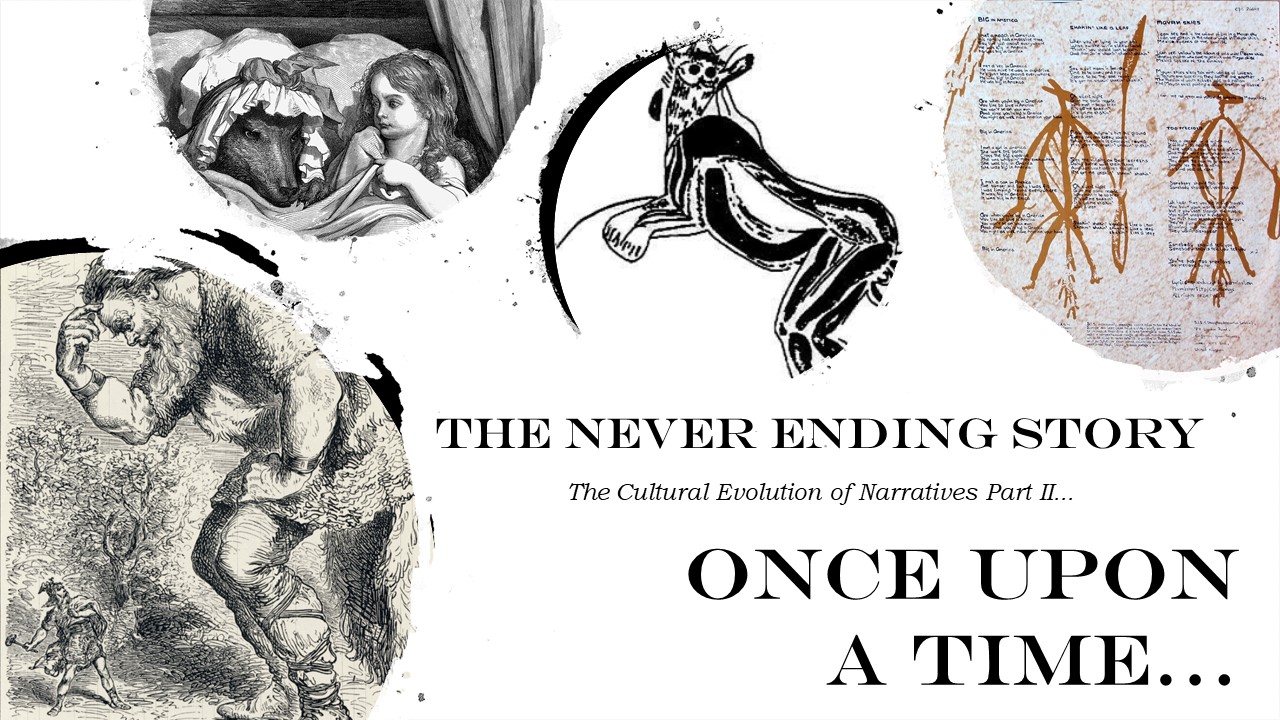 Lecture 2: Introduction II.
This lecture goes into more detail regarding a Darwinian cultural evolution approach to narratives. It explains how stories meet the criteria for Darwinian evolution and introduces some of the techniques researchers have used to examine the cultural evolution of narratives. The exercise gives you the chance to construct a phylogenetic tree for the classic folktale, Red Riding Hood.
Lecture 2: Introduction II.
This lecture goes into more detail regarding a Darwinian cultural evolution approach to narratives. It explains how stories meet the criteria for Darwinian evolution and introduces some of the techniques researchers have used to examine the cultural evolution of narratives. The exercise gives you the chance to construct a phylogenetic tree for the classic folktale, Red Riding Hood.
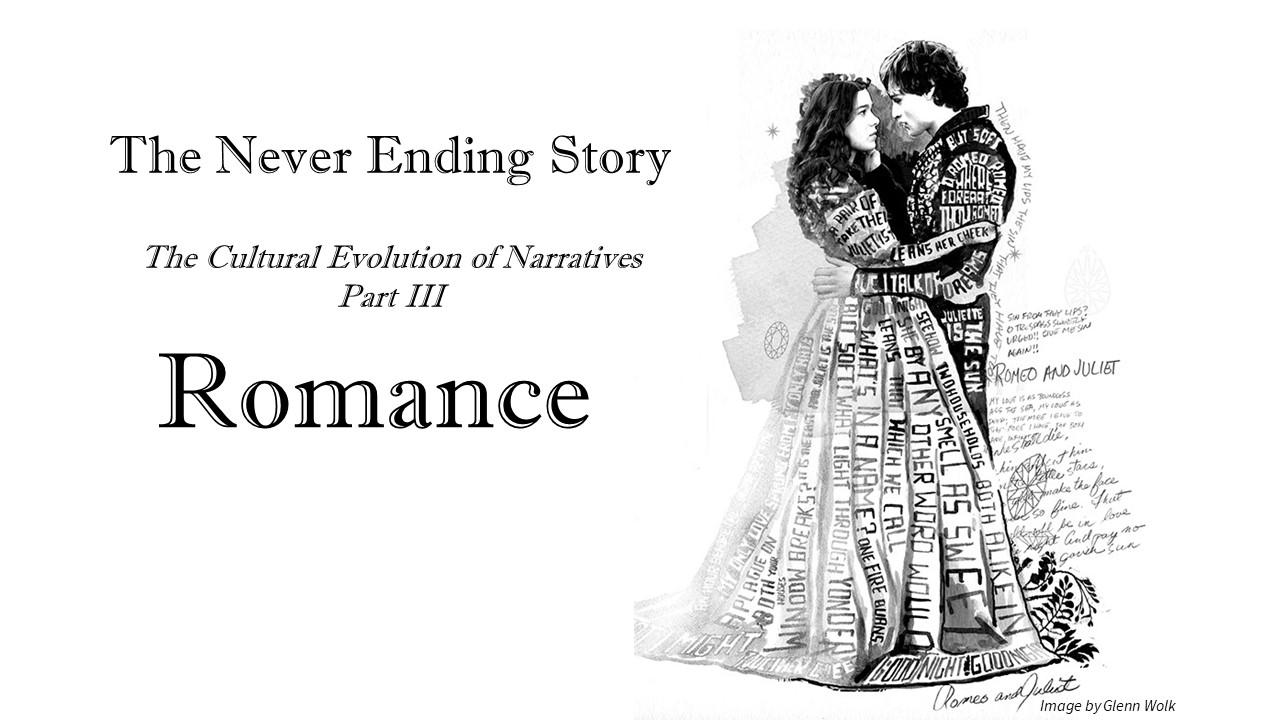 Lecture 3: Romance.
What can a cultural evolution approach tell us about the genre of Romance? This lecture explores how popular romantic narratives may reflect evolved mate preferences, and how international folktales may provide evidence for the universality of romantic love. In the exercise you will learn how to use corpus analysis and text mining to examine gender representations in classic literature, and how they may have changed over time.
Lecture 3: Romance.
What can a cultural evolution approach tell us about the genre of Romance? This lecture explores how popular romantic narratives may reflect evolved mate preferences, and how international folktales may provide evidence for the universality of romantic love. In the exercise you will learn how to use corpus analysis and text mining to examine gender representations in classic literature, and how they may have changed over time.
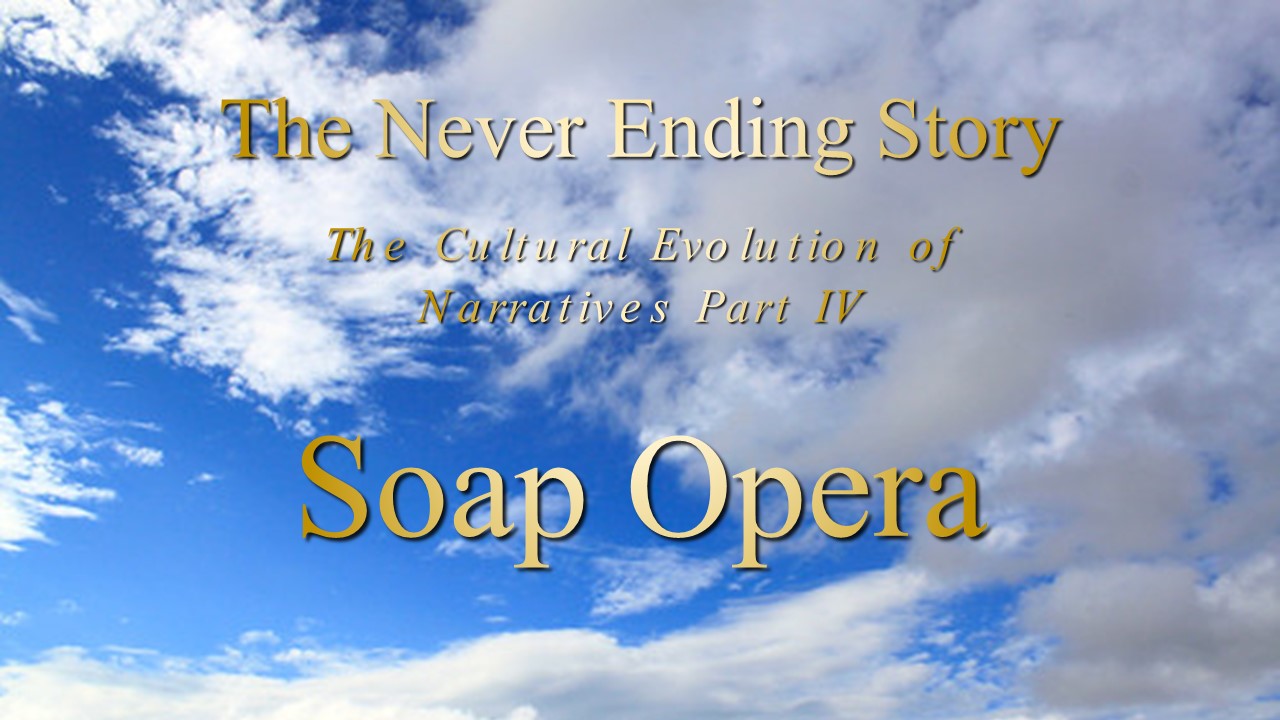 Lecture 4: Soap Opera.
Why are soap operas and other stories involving social interaction so popular? This lecture introduces the concept of cognitive content biases, and our bias for social information. In the exercise you will learn how to code material produced by participants in a transmission chain experiment, to test if social information is more likely to be preserved than other types of content.
Lecture 4: Soap Opera.
Why are soap operas and other stories involving social interaction so popular? This lecture introduces the concept of cognitive content biases, and our bias for social information. In the exercise you will learn how to code material produced by participants in a transmission chain experiment, to test if social information is more likely to be preserved than other types of content.
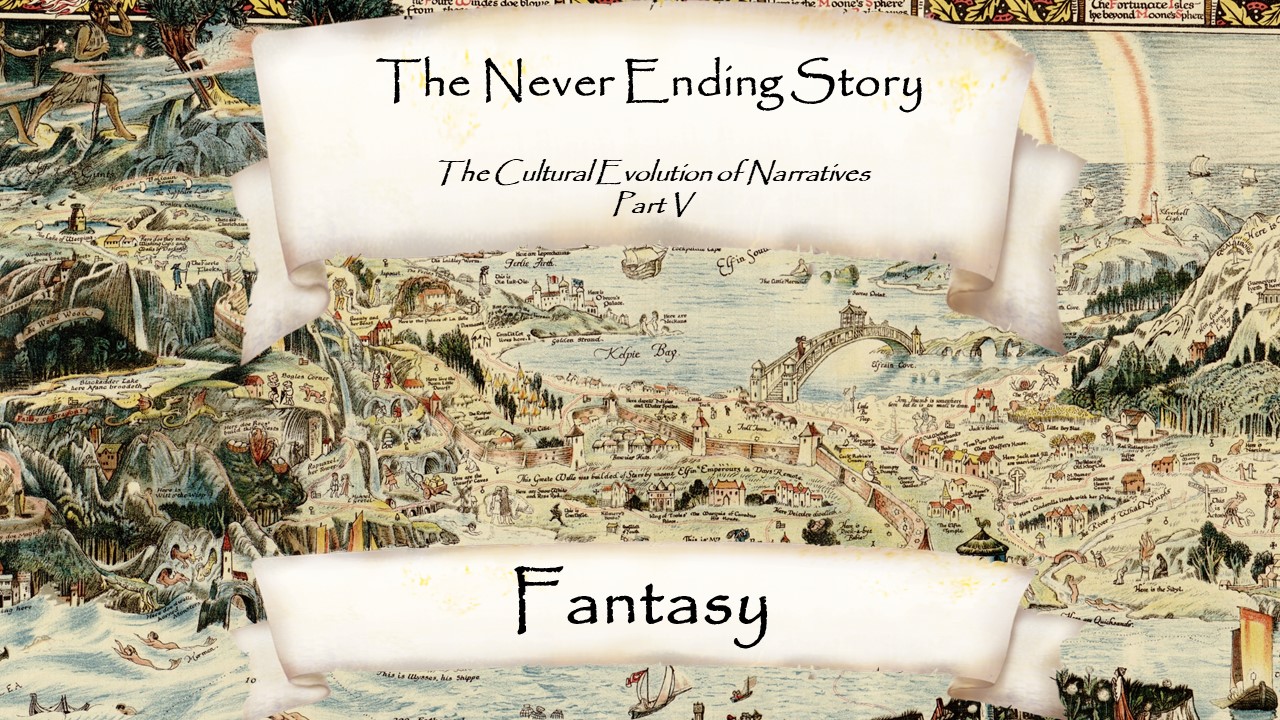 Lecture 5: Fantasy.
Why are stories featuring fantastical beasts, monsters and the supernatural universally so culturally successful? This lecture explores the psychological foundations of their appeal and how striking a balance between a few counterintuitive elements with many normal elements is key to their cognitive appeal. In the exercise you will learn how to code a selection of folktales to test some of the predictions of the theory discussed in the lecture.
Lecture 5: Fantasy.
Why are stories featuring fantastical beasts, monsters and the supernatural universally so culturally successful? This lecture explores the psychological foundations of their appeal and how striking a balance between a few counterintuitive elements with many normal elements is key to their cognitive appeal. In the exercise you will learn how to code a selection of folktales to test some of the predictions of the theory discussed in the lecture.
 Lecture 6: Horror.
Do you like scary movies? Horror is one of the world’s most successful genres and horrific elements are often present in traditional folktales and myths. But why are stories that evoke disgust and fear so culturally successful? This lecture explains how successful narratives exploit biases for emotive content, and why stories that evoke negative emotions might be particularly successful. The exercise gives you the chance to edit two scary urban legends to make them more cognitively appealing, as a researcher might in an experiment.
Lecture 6: Horror.
Do you like scary movies? Horror is one of the world’s most successful genres and horrific elements are often present in traditional folktales and myths. But why are stories that evoke disgust and fear so culturally successful? This lecture explains how successful narratives exploit biases for emotive content, and why stories that evoke negative emotions might be particularly successful. The exercise gives you the chance to edit two scary urban legends to make them more cognitively appealing, as a researcher might in an experiment.
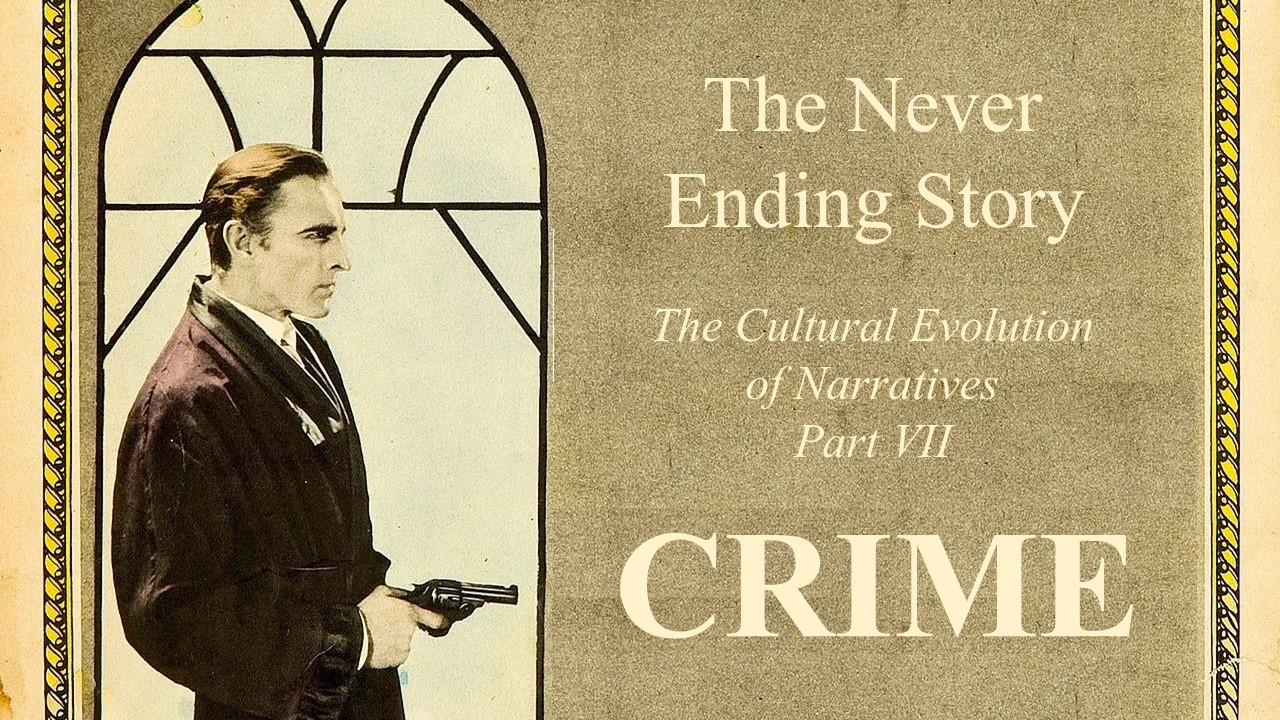 Lecture 7: Crime.
Cumulative cultural evolution has become a key focus of research in Cultural Evolution, but the focus has largely been on the evolution of tools and technology. Are narratives also examples of cumulative cultural evolution? This lecture introduces the concept of cumulative cultural evolution and takes you through the evolution of the crime story, explaining how it has accumulated traits through its evolution. In the exercise you will read an article discussing the evolution of a single literary device – the 'clue' in detective fiction.
Lecture 7: Crime.
Cumulative cultural evolution has become a key focus of research in Cultural Evolution, but the focus has largely been on the evolution of tools and technology. Are narratives also examples of cumulative cultural evolution? This lecture introduces the concept of cumulative cultural evolution and takes you through the evolution of the crime story, explaining how it has accumulated traits through its evolution. In the exercise you will read an article discussing the evolution of a single literary device – the 'clue' in detective fiction.
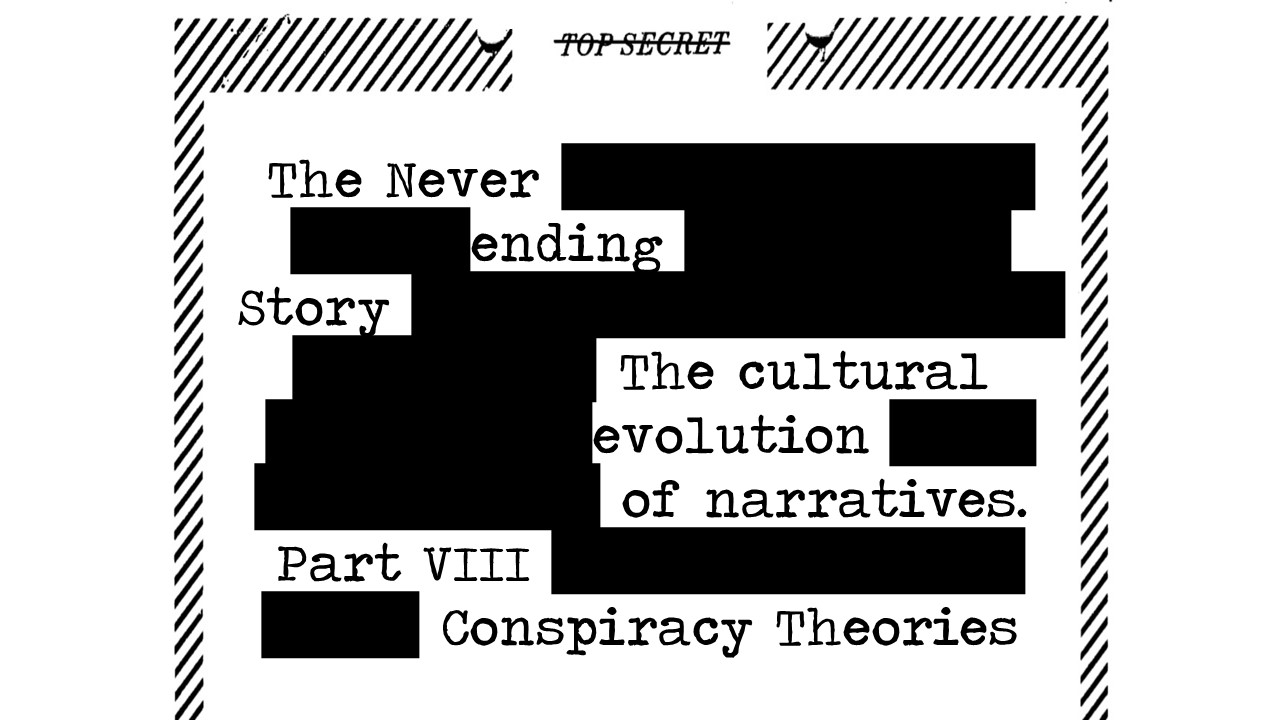 Lecture 8: Conspiracy Theory.
Conspiracy theories are a genre of narrative that has been with us for millennia and has had a significant impact on our society. But what might explain their cultural success? This lecture explains how culturally successful conspiracy theories appeal to a combination of fundamental aspects of human psychology. In the exercise you will code examples of popular conspiracy theories from the last sixty years and assess their appeal.
Lecture 8: Conspiracy Theory.
Conspiracy theories are a genre of narrative that has been with us for millennia and has had a significant impact on our society. But what might explain their cultural success? This lecture explains how culturally successful conspiracy theories appeal to a combination of fundamental aspects of human psychology. In the exercise you will code examples of popular conspiracy theories from the last sixty years and assess their appeal.
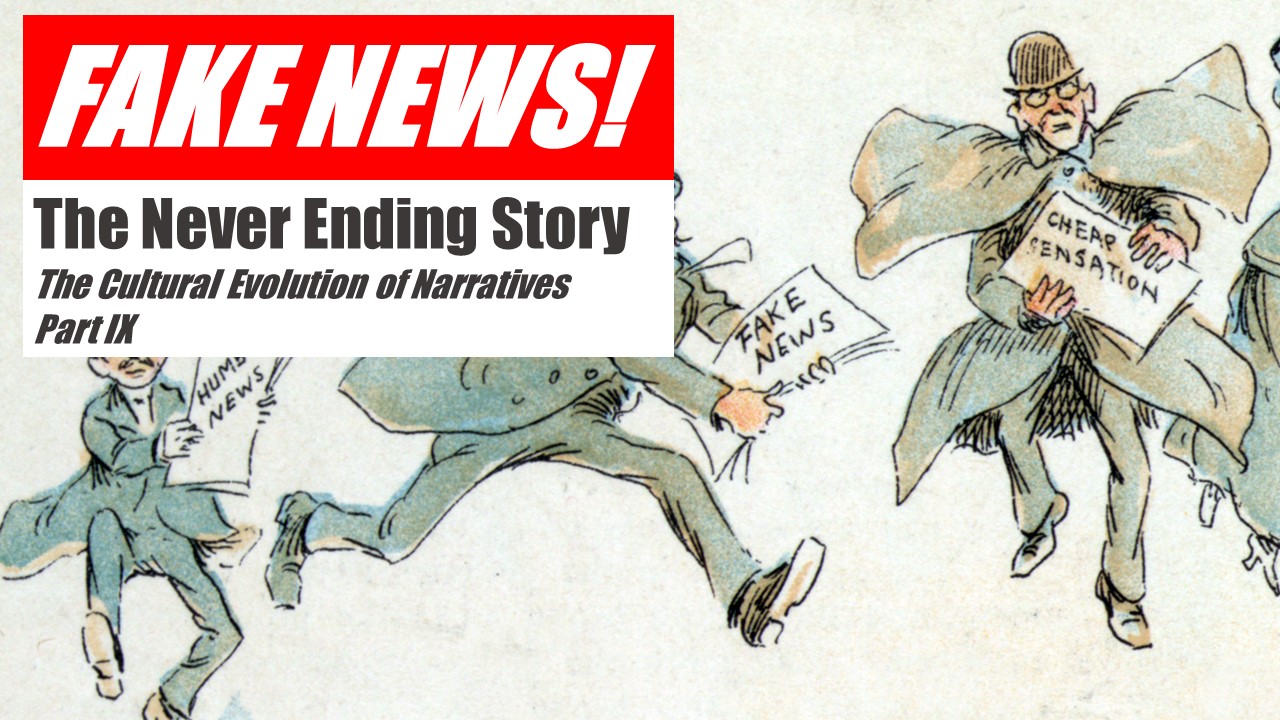 Lecture 9: Fake News.
'Fake News' is a serious contemporary issue that has garnered much discussion. This lecture explains how its cultural success can be better understood by how it exploits several of the biases covered in previous lectures and demonstrates the value of a cultural evolution approach to the issue. In the exercise you will compare 'fake news' to genuine news, to assess if it does exploit content biases.
Lecture 9: Fake News.
'Fake News' is a serious contemporary issue that has garnered much discussion. This lecture explains how its cultural success can be better understood by how it exploits several of the biases covered in previous lectures and demonstrates the value of a cultural evolution approach to the issue. In the exercise you will compare 'fake news' to genuine news, to assess if it does exploit content biases.
This project was supported by Grant #61105 from the John Templeton Foundation to the University of Tennessee, Knoxville (PIs: S. Gavrilets and P. J. Richerson) with assistance from the Center for the Dynamics of Social Complexity and the National Institute for Mathematical and Biological Synthesis at the University of Tennessee, Knoxville.

The Cultural Evolution Society's Online Learning Tutorial Series is licensed under a Creative Commons Attribution-NonCommercial-ShareAlike 4.0 International License. For designers' contact information, click here.
